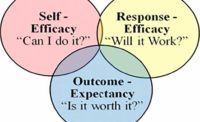How we talk to ourselves (intrapersonal communication) and to others (interpersonal communication) is the most powerful determinant of safety excellence, I believe. In fact, I'm convinced that the dramatic success companies experience with behavior-based safety is essentially due to an increase in the quality and quantity of interpersonal conversation about safety. This process in turn improves intrapersonal conversations, increasing one's sense of personal control and optimism regarding their ability to prevent occupational injuries.
In this article, I'd like to convince you of the power of conversation. Next month, I'll offer guidelines for improving our conversations with others, and with ourselves. But I can't expect you to spend the time and effort needed to improve communications until you truly appreciate the power of conversation. So I hope you'll consider the following points.
Building barriers
Almost everyone has seen how a lack of communication can escalate a minor incident into major conflict. Here's an example: You see a co-worker and say, "hello;" yet he or she passes by without reacting. Maybe they didn't see you, or had other thoughts on their mind. Still, it's easy for you to assume the person is unfriendly or doesn't like you. So the next time you see this person you avoid being friendly. You might even talk about that person's "unfriendliness" to others. I think you can see how the barriers start to build.This is only one of many situations that can stifle interpersonal communication and lead to negative feelings and judgments. The result? Perhaps perceptions of conflict, or an unpleasant relationship, lowered work output, and reduced willingness to actively care for another person's safety.
Resolving conflict
If the lack of conversation can initiate or fuel conflict, it's not surprising that the occurrence of conversation can prevent or eliminate it. "Let's talk it out," as the saying goes. Of course, it's the quality of that conversation that will determine whether any perceived conflict is heightened or lessened. Next month, I'll address this issue of quality. Here I only want to show how the quality of conversation can make or break interpersonal conflict, which in turn enables constructive or destructive relationships.Bringing intangibles to life
What are love, friendship, courage, loyalty, happiness, and forgiveness? Sure, you can describe behaviors that reflect these concepts, but where is the true meaning? I think we derive the meaning of these common words from our conversations. Think about how we "fall in or out of love" depending on how we talk to ourselves and others. We can convince ourselves we are happy through our self-talk, and this inner-conversation is obviously influenced by what we hear others say about us.We define another person's friendship, courage, or loyalty by talking about that individual in certain ways, both to ourselves and to others. Our mental scripts and verbal behavior are powerful - giving useful meaning to concepts that define the very essence of human existence. And when groups, organizations, or communities communicate to define these concepts, we develop a "culture." Perhaps it's fair to say that culture is conversation - both spoken and unspoken.
Defining culture
Does the term "unspoken conversation" make sense? I'm referring to customs or unwritten rules we heed without mention. For example, we might realize the "teacher's pets" sit in the front row, or the boss doesn't want to hear about a "near miss," or the real purpose of the safety incentive program is to stifle reporting of OSHA recordables. We might also know characteristics that bias certain managers' performance appraisals, from gender and seniority to ability on the golf course.It might be understood that a male with high seniority and a low golf handicap is more likely to get the special training assignment, but such prejudice is certainly not expressed. If it were, a productive conversation would be possible - one that could reduce conflict and bias. The bottom line: Spoken and unspoken words define cultures and sub-cultures. And these cultures can change, for better or worse, through interpersonal and intrapersonal conversation.
Defining image and self-esteem
Public conversation defines public image, whether referring to an individual or an organization. Sometimes, though, different groups talk about an individual or organization in different ways. As a result, we get mixed messages and an inconsistent public image. The image of our president changes, depending on whether you're listening to Democrats or Republicans. The safety image of an organization can vary, depending on who is doing the talking. Safety professionals might question the achievement of "zero injuries," while the public would not doubt this company's elite ranking.How we talk to ourselves both influences and reflects our self-esteem. It's probably fair to say that our mental script about ourselves is our self-esteem. We can focus our self-talk on the good things people say about us, or on critical statements we've heard about us. The result is a certain kind of self-talk we call "interpretation." Such intrapersonal communication can increase or decrease how we feel about ourselves. In other words, our self-esteem can go up or down according to how we talk to ourselves about the way others talk about us.
Making breakthroughs
In his provocative book "Leadership & the Art of Conversation" (Prima Publishing, 1997), Kim Krisco defines a breakthrough as going beyond business-as-usual and getting more than expected. This requires people to realize new possibilities, commit to going for more, and then make a concerted effort to overcome barriers. How is this done? You guessed it - through conversation.Expect barriers and resistance to change, warns Krisco. And the greater the change, the greater the resistance. But remember, most barriers to change are interpretations or people's self-talk about perceived reality. Conversation, both interpersonal and intrapersonal, enables us to overcome the barriers that hold back the accomplishment of breakthroughs.
I hope I've convinced you that the status of safety in your organization is largely determined by how safety is talked about, from the boardroom to the breakroom. And whether we feel responsible for safety and are committed to go for a breakthrough depends on our interpretation or mental script about safety conversations.
Given the power of conversation to resolve conflict; achieve breakthrough; and define image, self-esteem, and culture, we need to direct this powerful tool to improve safety. But how do we maximize interpersonal and intrapersonal conversations? What kinds of conversations are more likely to provoke and maintain improvements? Stay tuned. That's the topic for my ISHN contribution next month.
By E. Scott Geller, Ph.D. Dr. Geller and his partners at Safety Performance Solutions help organizations improve their interpersonal conversations about safety and achieve breakthroughs in injury prevention. For more information, call (540) 951-7233 (SAFE ), e-mail: safetyperformance@safety.com; Web site: www.safetyperformance.com.
Sidebar -
Talking Points Conversations we have with ourselves and others have the power to:
- Initiate or fuel conflict
- Defuse or eliminate conflict
- Shape self-esteem
- Shape public image
- Increase or decrease safety motivation
- Shape an organization's safety image
- Define work cultures, including safety cultures
- Raise or lower production output
- Improve or hinder safety performance
- Achieve safety breakthroughs





